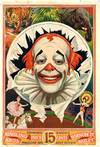
Original drypoint etching (Giraffes), 33 x 45 cm, 22.5 x 30.3 cm printed area, on cream wove paper, signed, (no date, but 1949)
by RAUSCHENBERG, Robert
- Used
- first
- Condition
- The only known signed example of Rauschenberg's first etching, and one of his earliest prints, in fine condition. Provenance: Gi
- Seller
-
Deep River, Connecticut, United States
Payment Methods Accepted
About This Item
One of Rauschenberg's earliest prints, depicting several stylized giraffes amidst trees and tall grass. In addition to the drypoint, Rauschenberg employs strips of burlap, which were soaked in acid and laid on the plate, creating a highly textured surface. The effect hints at the overlay process for which he was to become famous. The giraffe motif was used again recently in work in the 1990's. The etching is signed "RAUSCHENBERG" in the plate and additionally inscribed in pencil on the bottom edge, "My Love to HAZEL, Rauschenberg". Hazel was Hazel Larsen Archer, the artist's photography teacher at Black Mountain College and a close friend during this era. Rauschenberg and Larsen Archer remained friends and continued to correspond until she passed away in 2001. The print was executed in late 1949, while Rauschenberg and his wife Susan Weil were studying together at the Art Students League in New York City, following their time together at Black Mountain College, NC. The print is among Rauschenberg's very earliest. David White, archivist for the Rauschenberg Studio, has designated the print as 49.005, with numbers 49.001 - 49.004 being the blueprints executed at Black Mountain. White has stated that there is no priority established for this etching relative to the blueprints, but in his estimation the etching antedated the blueprints. The standard reference for the artist's early prints, Robert Rauschenberg: Prints 1948-1970, (Minneapolis Institute of Arts, 1971), makes no mention of this etching. Nor is there any mention of this etching in the rest of the literature devoted to Rauschenberg's work. The monograph traces the history of his prints during this era as follows: "Prior to his introduction to the medium of lithography, Rauschenberg had been briefly involved, and then somewhat tentatively and experimentally, with printed images. In 1948-49 he was studying at Black Mountain College in North Carolina with Josef Albers. Of the few works created at that time, only three, all of them unique, are still known to exist. The three extant prints are: The first work was a woodcut, or perhaps series of woodcuts (c. 1948-9), entitled This is First Half of a Print Designed to Exist in Passing Time." (14 woodcuts bound with cord in book form, with a penciled title page). Rauschenberg started working with photography at Black Mountain College where he made a number of blueprints, together with Susan Weil. Of the two or three dozen originally made, Female Figure is the only remaining example. The Automobile Tire Print (1951) was made together with John Cage (who had a car). "I did a 20 foot print, and John Cage was involved because he was the only person with a car who could be willing to do this. I glued together 50 sheets of paper. He drove his A-model Ford through the paint and onto the paper. He did a beautiful job but I consider it my print. The only known signed example of Rauschenberg's first etching, and one of his earliest prints, in fine condition. Provenance: Given by the artist to Hazel Larsen Archer (1926-2001); purchased from the estate of Hazel Larsen Archer in 2003. The only known signed example of Rauschenberg's first etching, and one of his earliest prints, in fine condition. Provenance: Given by the artist to Hazel Larsen Archer (1926-2001); purchased from the estate of Hazel Larsen Archer in 2003.
Reviews
(Log in or Create an Account first!)
Details
- Bookseller
- James S. Jaffe Rare Books LLC
(US)
- Bookseller's Inventory #
- 18922
- Title
- Original drypoint etching (Giraffes), 33 x 45 cm, 22.5 x 30.3 cm printed area, on cream wove paper, signed, (no date, but 1949)
- Author
- RAUSCHENBERG, Robert
- Book Condition
- Used - The only known signed example of Rauschenberg's first etching, and one of his earliest prints, in fine condition. Provenance: Gi
- Quantity Available
- 1
- Edition
- One of Rauschenberg's earliest prints, depicting several stylize
Terms of Sale
James S. Jaffe Rare Books LLC
Any item may be returned for any reason within seven days of receipt provided prior notification has been given
About the Seller
James S. Jaffe Rare Books LLC
Biblio member since 2009
Deep River, Connecticut
About James S. Jaffe Rare Books LLC
By appointment only.
Glossary
Some terminology that may be used in this description includes:
- Fine
- A book in fine condition exhibits no flaws. A fine condition book closely approaches As New condition, but may lack the...
- Inscribed
- When a book is described as being inscribed, it indicates that a short note written by the author or a previous owner has been...
- Plate
- Full page illustration or photograph. Plates are printed separately from the text of the book, and bound in at production. I.e.,...
- New
- A new book is a book previously not circulated to a buyer. Although a new book is typically free of any faults or defects, "new"...

